Typically, decorating kicks off with envisioning how the home should look. Consider if accents match the overall vibe. Does the color scheme, furniture, and personal touches catch the eye? Are they modern or do they make the space seem old-fashioned and drab? Think about how the look reflects personality, comfort, budget, and practicality. Though it needs a bit more thought, **adding eco-friendly decor** into the design is crucial.
These 14 tips ensure that you prioritize the planet when decorating your home.
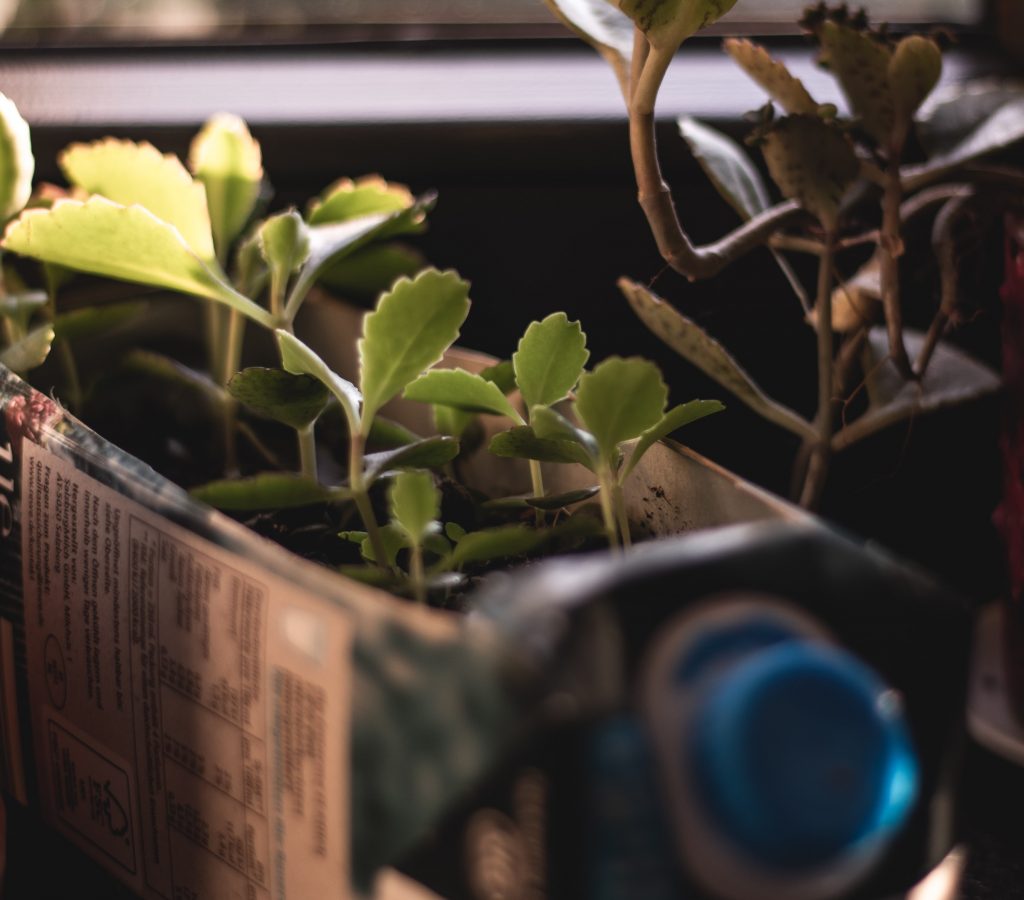
Sustainability staple: Get into upcycling
Calling all garage sale enthusiasts! Here’s where your ability to spot a bargain comes into play. Reduce landfill waste by purchasing gently used items to repurpose. Get creative with your eco-friendly decorating by upcycling items that you no longer use. Start by choosing a piece of old furniture to reupholster (bonus points if you used fabric scraps). Then, transform empty tissue boxes into nifty storage containers. You can also turn waste wine bottles into decorative flower vases. Similarly, upcycle old candle jars into storage containers, table decor, planters or desk organizers. The upcycling possibilities are endless!
Make simple repairs to be more eco-friendly
Survey your place for items that can be repaired and fix them. For instance, try patching up your old duvet instead of purchasing a new one. Or find a repair shop to fix appliances you planned on tossing (as long as they’re not too ancient). Try your hand at fixing that broken chair leg before rushing out to replace it. If the thought of fixing random household items feels overwhelming, keep it simple! Limit your repairs to retouching paint or removing scratches and scrapes from laminate flooring. All of these options will help to cut down on landfill waste while helping your home look like new.
Renovate with non-toxic materials
Looking to freshen up your interior the eco-conscious way? Stick to non-toxic materials that won’t harm the environment. For example, give your rooms a facelift with non-toxic paint. Taking on a drywalling project? Research non-toxic drywall and plaster options. Sprucing up your 3D wall art project? Swap the traditional caulk for a latex and biocide-free alternative. When completing renovations that require glue, shop around for non-toxic options. These go a long way when it comes to eco-friendly decorating.
If you’re unsure of whether a material is non-toxic, experts recommend contacting the manufacturer before purchasing to get a complete list of ingredients.
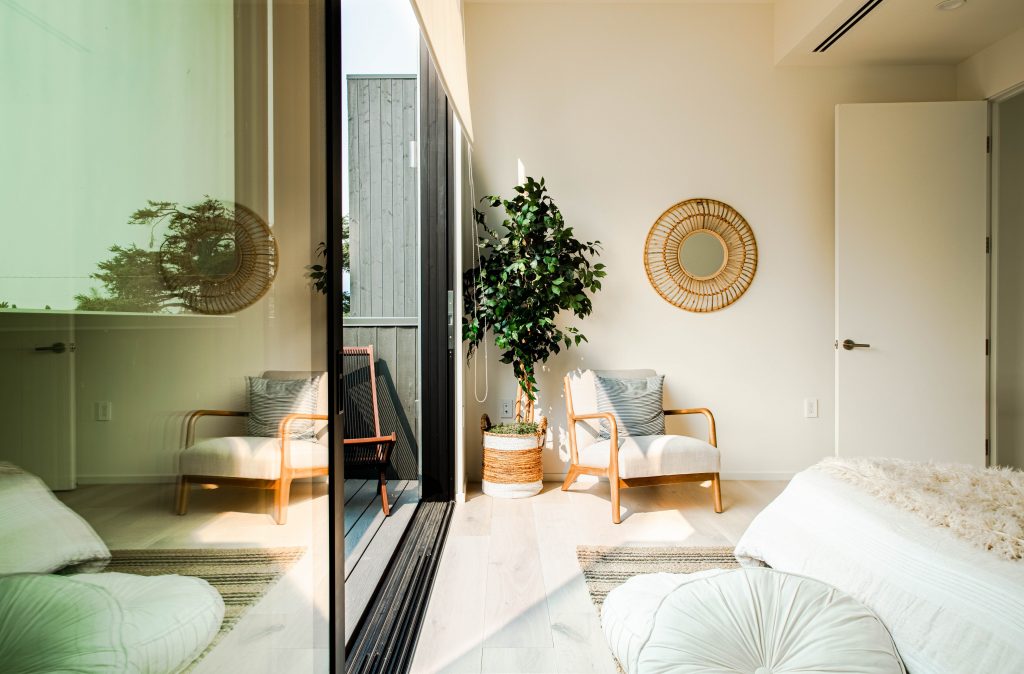
Spruce up your space with solar lighting
As long as it’s within reach of sunlight or an artificial light source, indoor solar lighting is a feasible eco-friendly decor option. The sun counts as a renewable energy source. So utilizing this lighting option goes a long way toward helping sustain the well-being of the environment. By choosing solar lighting, you will directly contribute reducing harmful greenhouse gas emissions and your carbon footprint.
These lights typically come with batteries and other electrical components that contain hazardous materials. So be sure to dispose of them properly to avoid environmental pollution.
Buy sustainable rugs
We love rugs for their ability to anchor a room while infusing spaces with warmth, texture, and personality. To add a rug into your eco-friendly decorating mix, minus the environmental pollution, buy sustainable. This includes rugs made from materials like organic cotton, hemp, banana silk, ethically-sourced wool, sisal, seagrass, and jute, among others. Additionally, you can choose from rugs made from recycled materials like plastic, ropes, and carpet tiles.
Buy furniture made from reclaimed wood
If you’re concerned about going on a wild goose chase to find furniture sourced from reclaimed wood, don’t be; this particular eco-friendly decor tip isn’t as complicated as it sounds. Large chains routinely sell furniture crafted from upcycled materials. Plus, smaller online shops have tons of handmade and custom pieces available. Unlike new wood, the treatment process for reclaimed wood typically doesn’t involve harsh chemicals. Thus, it reduces opportunities for air/water pollution or waste going to landfills. Additionally, no new trees are cut down to create these products. On top of being eco-conscious products, these pieces are distinct in nature. In other words, the odds of you spying your reclaimed wood desk in someone else’s office are slim to none.
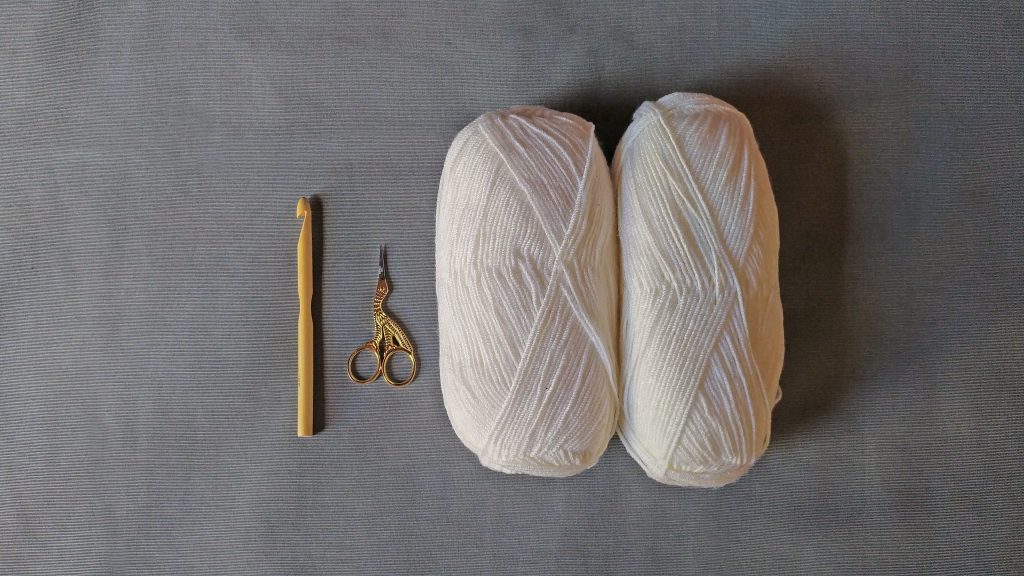
Go big on DIY eco-friendly decor
To cut down on creating waste and spending money on decorative items, consider giving your home an eco-chic makeover. Start by committing to one or (several) DIY projects to accessorize your space. Challenge yourself to research and experiment with design hacks like transforming an old bookcase into a one-of-a-kind built-in shelving unit. For example, fashion DIY wall hangings out of old fabric scraps. Also, make bathroom and kitchen storage containers out of mason jars instead of investing in new containers. Another option is to give fixtures a refresh by spray painting them instead of buying replacements. Check out your favorite DIY influencers’ social media feeds for eco-friendly decorating inspiration.
Buy multi-purpose decor
One simple way to ensure your decor meets eco-friendly criteria is to buy less of it. Multi-purpose furniture makes this possible. Think about it: A coffee table that converts into a desk and dining table consumes a lot less space and natural resources than purchasing three separate pieces. Cue: maximum productivity while staying eco-conscious.
Invest in quality sustainable items
In order to reduce your waste footprint, purchase durable, high-quality, decorative accessories. This may require more time and research, but the environmental payoff makes the effort worthwhile. The Environmental Protection Agency (EPA) found that a significant portion of furniture waste (12.1 million tons in 2018) goes to landfills. Fast furniture purchases are super convenient, especially when you’re budgeting or trying to quickly furnish a new place. But high quality accents reduce your waste footprint, so cut down on your personal revolving door of decor. Also, who likes seeing abandoned furniture littering the roadways? Instead, buy quality decorative items with the potential to last a lifetime. This way, you’ll help improve the lives of generations that come after you.
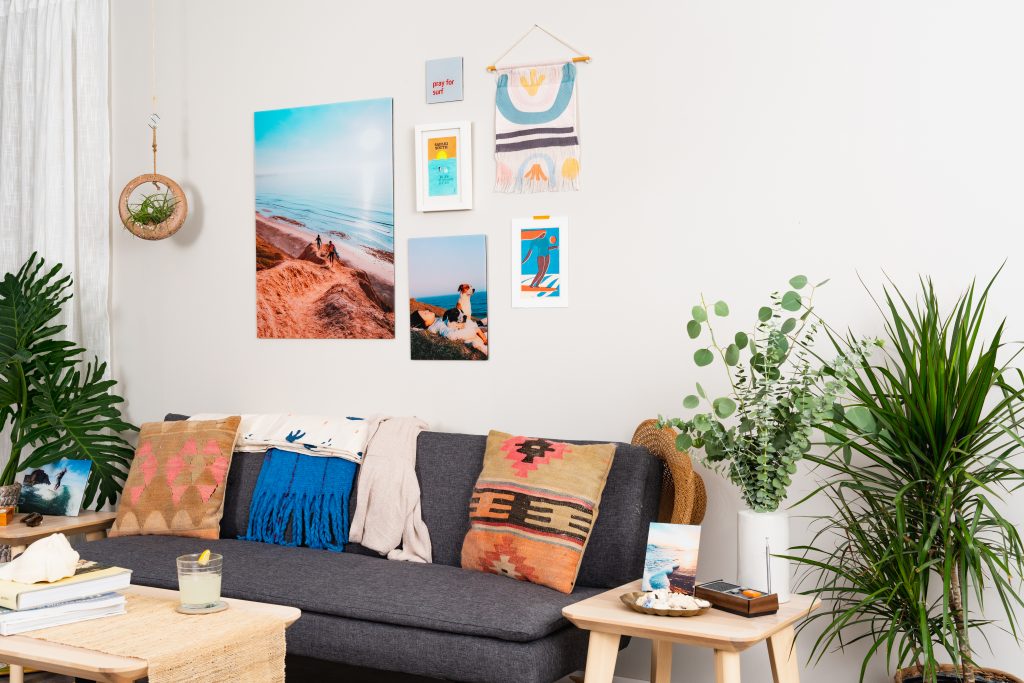
Purchase ethically sourced pillows and throws
Let’s face it: No one wants to hang out in a room without accent pillows and throws. They help anchor a room’s color scheme. Pillows and throws enhance the plush, cozy feel of any space they occupy. And if you choose right, they’re extremely comfortable and some even assist with body alignment and pressure relief. Plus, they’re super casual and chic. However, a lot of pillows and throws are made with harmful chemicals, including formaldehyde, benzene and chemical-laden cotton and latex.
But eco-friendly pillows offer chemical-free comfort that doesn’t contribute to environmental destruction. Purchase those made from organic cotton and latex, or organic wool and down; these oftentimes take into account animal welfare in a way that traditional production methods do not.
Carefully curate your candle collection
The obsession with scented candles is totally understandable. They add ambiance to your home and cater to the senses. On the environmental side of things, they reduce electricity consumption by providing an alternate light source. However, there are some alternatives that go the extra mile toward environmental protection. For a quick eco-friendly candle upgrade, shop brands that use recyclable packaging, reusable glass candle holders, and plastic-free containers. Also, some brands even offer candles with lead-free cotton wicks and soil and seeds to plant when the candle burns.
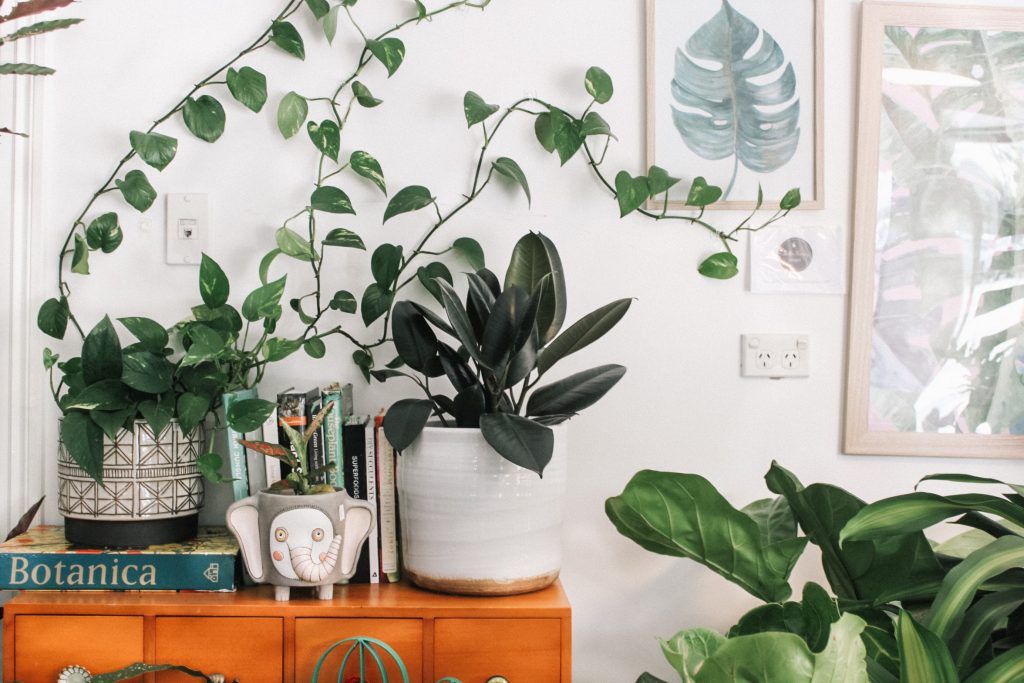
Promote planetary well-being with plants
Need a push toward becoming a plant parent? Allow the health of the environment to be the deciding factor. We don’t need to tell you how beneficial plant ownership is (but we will!). In addition to elevating the look of your space, plants purify the air. According to a NASA study, certain plants even help clear the air of harmful chemicals like benzene, ammonia and xylene. (All of these can contribute to health issues like headaches, dizziness and nausea).
Among these air-filtering plants are the Peace Lily, Rubber Plant, Aloe Vera, and the Money Plant. They all filter out toxins such as formaldehyde, benzene and carbon monoxide. (Not to mention, they’re excellent eco-friendly decorating additions!)
Get with green carpeting
According to the EPA, “over 4 billion pounds of carpet enters the solid waste stream in the United States each year.” So, if you want a greener home, bypass the carpeting altogether. Explore eco-friendly alternatives like cork, bamboo, glass tiles, concrete, or rubber. If you simply can’t resist the feel and the look of cushy carpeting, then opt for a green alternative. Per the EPA, carpet designated as eco-friendly contains “low or volatile organic compounds (VOCs), safer dyes, backing and adhesives, recycled content,” or come from manufacturers that offer “end-of-life take-back programs.”
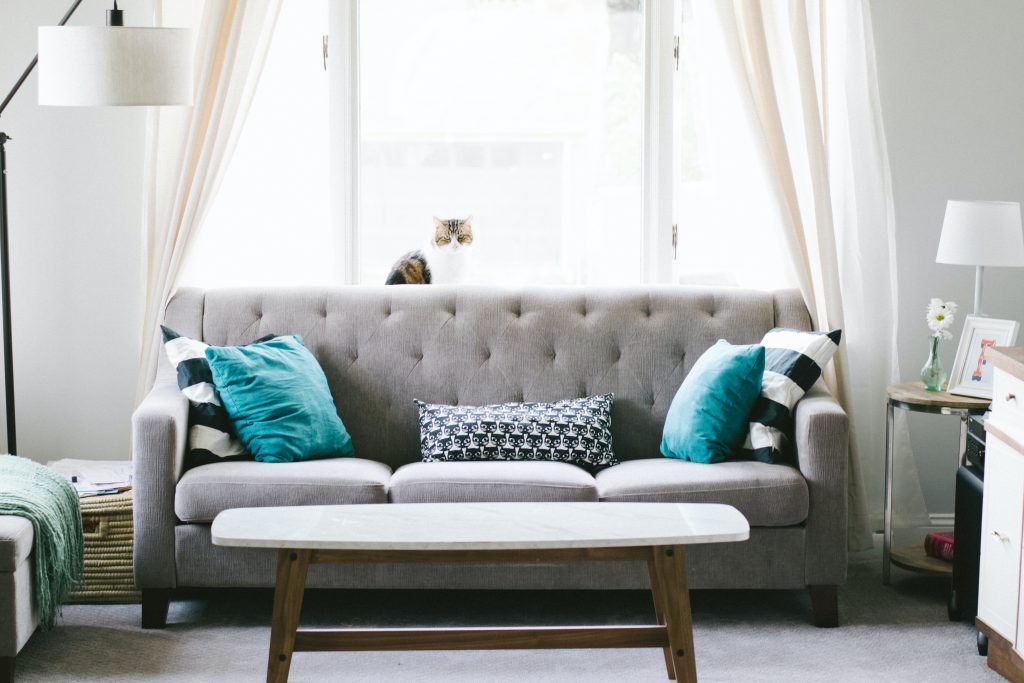
Make a conscious curtain selection
Hanging curtains can instantly freshen up a room’s overall aesthetic. Unfortunately, many conventional options are made from non-biodegradable, synthetic materials like polyester. Some household curtains get their vibrant colors from artificial dyes that come from processes that poison the water supply in surrounding communities.
But luckily, there’s a way to add some shade to your spot without sacrificing the planet. Sustainable curtain brands use natural fabrics and dyes and manufacture their products without the use of harmful chemicals.
There’s no doubt that your home should be decorated to suit your personal tastes. But as members of a global community, it’s important to consider our environment in mind when creating a residential aesthetic. Instead of framing paper-printed photos, consider glass prints. With Fracture glass prints, not only will you receive a sustainable product, but you’ll support a zero-waste, carbon-neutral company. Place your prints next to a potted plant that cleans the air and absorbs light, along with your solar lighting system. Then, sit back and enjoy home decor that makes you and the planet feel healthier and more vibrant.
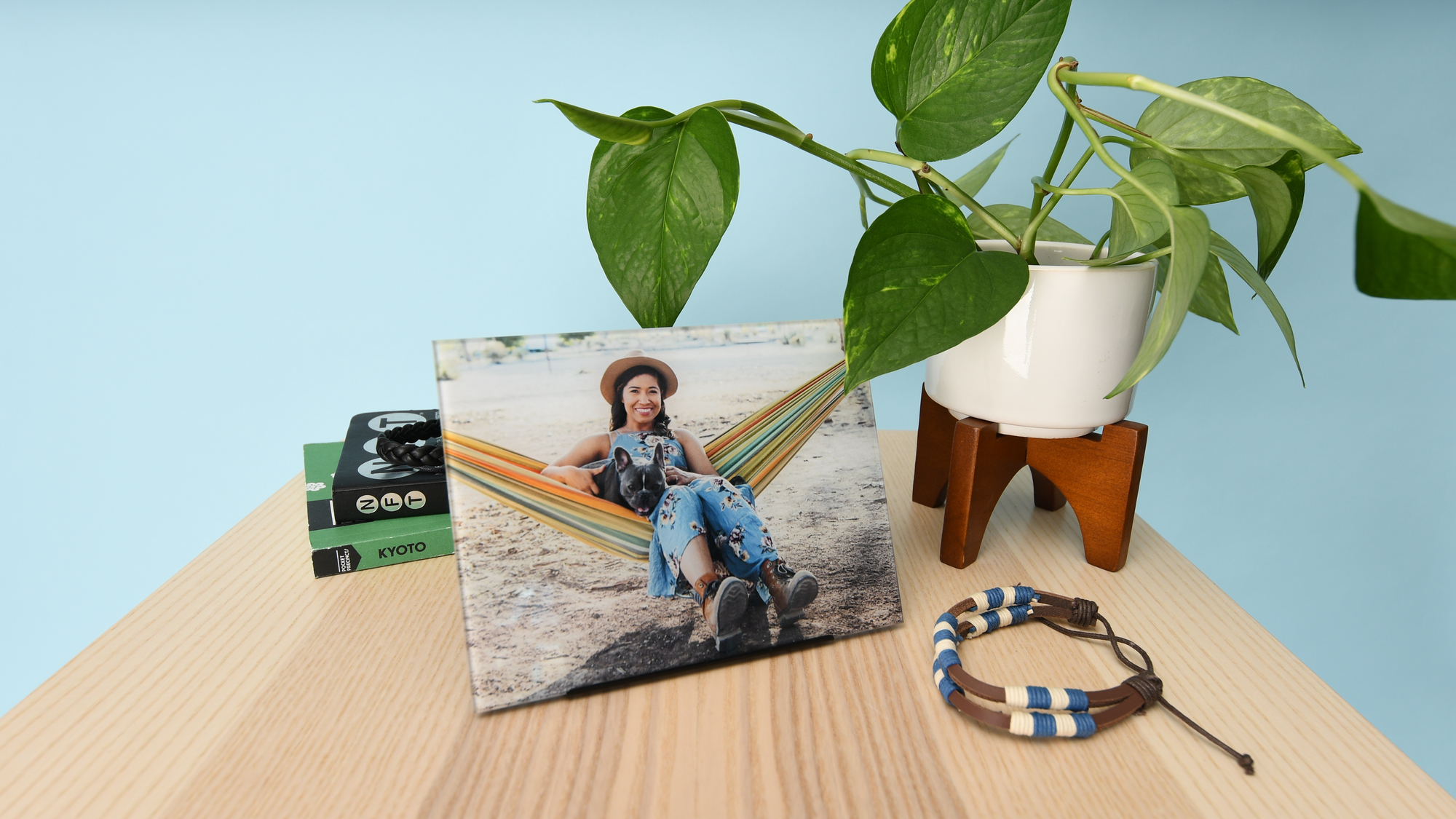





Comments